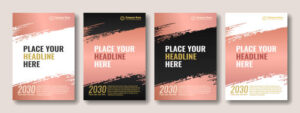Why Motion UI & Microinteractions Are the Future of Website UX
The digital landscape is constantly evolving, and Motion UI and microinteractions are among the most innovative advancements. These dynamic tools bring static pages to life, creating engaging, intuitive, and delightful UX. As websites shift from mere information hubs to interactive platforms, Motion UI and microinteractions stand out for their interactiveness in modern web design.
This blog explores why these elements are critical to the future of website UX. we will also discuss how using these elements aligns with emerging UX design trends and why they matter to users and businesses alike.
The Rise of Motion UI in Modern Web Design
Motion UI uses animations, transitions, and dynamic effects to enhance a website’s UI. It transforms flat designs into immersive experiences and can be used to guide users, provide feedback, and add personality.
Imagine a button that pulses subtly when you hover over it or the smooth transitions of a menu. These smooth transitions in modern web design don’t just enhance UI aesthetics, they also serve a purpose by:
- Directing attention
- Clarifying navigation
- Making interactions more natural
Designers leverage motion design principles for websites to ensure animations remain functional rather than overwhelming. A well-executed Motion UI element feels seamless, enhancing usability without distracting from the content. It bridges the gap between aesthetics and functionality, making websites memorable and user-friendly.
The Power of Microinteractions in Engagement
While Motion UI sets the stage, microinteractions steal the show. These small, purposeful animations or responses occur when users interact with a website. For example, on Facebook, the “like” button is represented by a thumbs-up, the color of which turns blue when clicked.
The role of microinteractions in web design lies in their ability to provide instant feedback, making users feel in control. They turn mundane tasks into delightful moments, elevating the overall experience.
The development of micro-interactions has accelerated as designers recognize their impact. From microinteractions in mobile and web apps to desktop interfaces, these tiny details create a sense of sophistication. They are redefining the future of micro-interactions, making websites feel alive, responsive, and human-centric.
How will these elements define the future of UX design
Users today expect more than static pages. They crave interactivity, personalization, and speed. Interactive UI design best practices emphasize creating experiences that respond to user actions in real time. Motion UI and microinteractions deliver precisely that. They turn passive browsing into active engagement, making them interesting website UI UX trends.
Consider how smooth transitions in modern web design guide users through complex journeys. A fade-in effect highlights new content, while a slide-out animation signals a completed task. These cues reduce confusion and keep users oriented. Similarly, microinteractions reward actions, like a heart icon fluttering when you click on favorite, reinforcing positive behavior. Together, they create a cohesive, intuitive flow that defines the future of UI/UX design.
Websites with thoughtful website design elements retain users longer and reduce bounce rates. A ui ux design agency specializing in custom web design services can use Motion UI and microinteractions to differentiate clients in competitive markets. The result? Happier users and stronger brand loyalty.
Bringing Personality to Website Design Elements
Static designs feel dated. Modern web design thrives on personality, and Motion UI injects that spark. A playful bounce, a sleek fade, or a clever hover effect reflects the brand’s identity. These motion design principles for websites ensure animations align with the brand’s tone, irrespective of whether it is professional, quirky, or bold.
Microinteractions amplify this effect. A checkout button that celebrates a purchase with a confetti burst or a progress bar that fills with a satisfying swoosh, these moments stick with users. The future of micro-interactions lies in their ability to humanize technology. They make digital interfaces feel less robotic and more relatable, a critical factor in the future of website UX.
Enhancing Usability with Interactive UI Design Best Practices
Usability remains the heart of great UX. Motion UI and microinteractions don’t just dazzle—they solve problems. For example, smooth transitions in modern web design ease users between pages, reducing the jarring effect of abrupt changes. A menu that unfolds gracefully or a form that slides into view keeps the experience fluid.
Microinteractions shine, and how! They confirm actions, signal errors, or highlight next steps. A button that dims when clicked prevents double submissions, while a shaking password field alerts users to a mistake. These website design elements improve functionality, proving that interactive UI design best practices prioritize the user above all.
The Role of Technology in the Future of Micro-Interactions
Emerging tools like AI are pushing boundaries further. AI-driven micro-interactions adapt to user behavior, offering personalized responses. Picture a search bar that suggests terms with a gentle nudge or a chatbot that reacts with animated flair. These innovations signal that UX design with interactive elements will anticipate user needs and respond dynamically in the future.
A ui ux design agency can harness these advancements to craft cutting-edge experiences. By integrating Motion UI and AI-driven micro-interactions, designers create interfaces that evolve with users. This adaptability ensures websites stay relevant in an ever-changing digital landscape.
Overcoming Challenges in Implementation
While powerful, Motion UI and microinteractions require careful execution. Overuse can clutter a site, slowing load times and frustrating users. Designers must follow website motion design principles to keep animations purposeful and lightweight. A custom web design service balances flair with performance, ensuring seamless delivery across devices.
Animations should enhance usability for all users, including those with disabilities. Subtle microinteractions in mobile and web apps must remain perceivable without relying solely on motion. A skilled ui ux design agency in New York navigates these challenges, delivering inclusive, high-impact designs.
Conclusion: The Path Forward
Motion UI and microinteractions are more than trends—they’re the heartbeat of the future of website UX. They transform static pages into dynamic experiences, blending beauty with utility. By embracing interactive UI design best practices, designers craft websites that captivate and convert. The development of micro-interactions and motion design principles for websites ensures every click, hover, and scroll feels intentional.
As the digital world evolves, the future of UX design with interactive elements will only grow stronger. Whether through AI-driven micro-interactions or smooth transitions in modern web design, these tools redefine how we connect with technology. For businesses, designers, and users alike, Motion UI and microinteractions pave the way to a more engaging, intuitive, and exciting online future.











